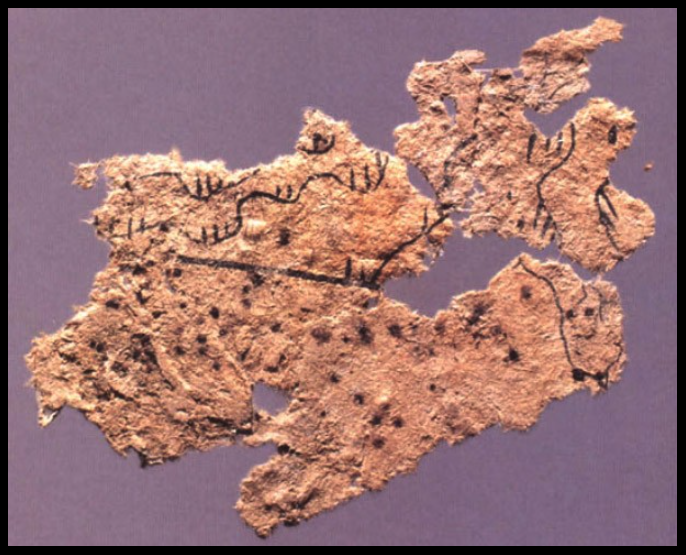As a painter we often overlook the everyday tools we use when creating what's inside us. But if we delve in the same way as when we create, there’s often a world of fascinating treasures right under our noses. Paper is one such treasure.
It’s so much a part of our daily life that it barely warrants a second glance, although electronics is reducing its use somewhat recently - as with this piece you’re reading now.
But what were its origins? The joke that is always used to besmirch some report or another is ‘How many trees did it take to produce that waste of time!?’ So, paper comes from trees, right?
Well, Wrong!
The oldest known piece of paper is thought to date from around AD 150 and was discovered in Wuwei in China's Gansu province. And it wasn’t made of wood pulp but cotton or, more accurately according to the, largely of cotton rags.
And, by the way, if you haven’t been to China go. It’ll blow your mind
Wuwei, in Gansu province, was a hub on the famous Silk Road, the original super highway in northern China bordering Inner Mongolia. So maybe it stands to reason that something as abstract a thought and invention as paper would come from there.
Gansu province is said to have been settled as far back as 5000 years ago so it stands to reason that it’s going to be further back than that.
Paper as we understand it today (that is, a sheet formed on a screen from water suspension) was invented in China around 2,000 years ago, although the exact date and inventor is unknown. Traditionally an Imperial Court official called Cai Lun (formerly romanised to Ts'ai Lun) is credited with its invention in around AD 100 but as paper is perishable it’s probably going to be further back than that and no one will actually know.
Cai Lun used ingredients that were readily available, instead of using exotic material like silk and hemp fibre. He used worn fishnets, cloth, bamboo fibre, and mulberry tree bark. Next, he added water to the ingredients and pounded the mixture with a wooden baton. He poured the mixture over a flat woven cloth and let it dry. When it fully dried, the fibers remained.
It was this addition of pulp, via tree bark and hemp ends, which enabled the large scale manufacture and worldwide spread of paper. In China he is deified as the god of papermaking.
And, as with most foundation Chinese inventions that began civilisation, it came to Europe through the enlightened hand of early Islam.
The oldest piece is from the Islamic part of the Iberian peninsula, the Mozarab Missal of Silos from the 11th century.
And before anyone says what about the earliest Bible? The Codex Sinaiticus, yes is from the 4th century CE but was written on vellum parchment. That’s a lot of dead animals.




Comments